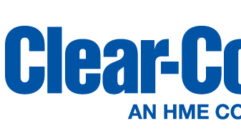
Clear-Com Tempest900 Intercom System Review
Apr 24, 2012 3:41 PM,
Reviewer: John McJunkin
A wireless system with substantial power and flexibility.

Clear communications between professionals is very important to the success of any production, and intercom systems have evolved from very simple mechanisms to highly complex multi-channel affairs that facilitate communications between professionals on one team, or between professionals on different teams. Front of house can talk to the monitor world, and the audio systems engineer can talk to the video folks, who in turn can complain to the lighting folks about how blown out their shot is because of that doggone bazillion foot-candle follow spot.
The days of being tethered by a wire are probably going to be history before long. Wireless systems are getting less expensive and more sophisticated all the time. I recently found myself in a situation where I would have given my eyeteeth for a wireless comm; I was the number two camera on a four-camera pageant-type shoot, situated on the corner of a ground platform at the bottom of the stairs that descended from the main stage. I repeated the same shot over and over—a sweeping pan zooming first out, and then back in as I followed each debutante and her escort. The wire of my intercom restrained me, and nearly tripped me several times. When I went shoulder-mounted at the end of the program, I simply had to abandon the wired intercom. The benefits of wireless comms should be pretty obvious.
Clear-Com has introduced the Tempest900 system, a wireless system of substantial power and flexibility. As you might imagine, the “900” designation indicates the system’s operation in the 900MHz band. Clear-Com also makes a 2.4GHz version. Both versions are available as 2- and 4-channel systems, for a sum total of four distinct Tempest configurations available. All four are compatible with two- or four-wire wired systems, including those of competing manufacturers. The system hops frequencies, eliminating the necessity for the user to even be aware of frequency. Up to five beltpacks can be served in full duplex mode, monitoring or speaking on up to four channels, and up to five base stations can be employed simultaneously, facilitating up to 25 beltpacks. A special shared mode allows unlimited beltpacks, with only five talking at any given moment. A third special split mode allows four beltpacks and full duplex operation all the time, with the fifth channel allowing unlimited beltpacks but with only one user talking at a time. I like all this flexibility—no two productions are ever the same, and I like having the capacity to configure the comm system in a way that makes sense for that particular production.
The CM-944 Tempest BaseStation is the center of the system’s operation. It’s a 1RU box with controls and displays on the front panel, where from left to right are a four-pin headset connection; controls for the headset, talk, call, and mic kill buttons, a pushbutton rotary encoder; and navigation buttons. A 240×64-pixel backlit LCD display shows the user all the information about the BaseStation, facilitating control over its various parameters. Continuing to the right are controls for any wired intercom devices connected to the system, indicating two- or four-wire operation, among other things. A USB port for firmware updates is also featured on the front panel, along with a jack via which the BaseStation is paired with Clear-Com’s BeltStation beltpacks. The system’s main power switch is also found on the front panel. On the rear panel are AC and DC power inlets, XLR in and out connectors for two-wire intercom use, and RJ-45 jacks for four-wire intercoms. A stage-announcer XLR output is also featured on the rear panel, as are a pair of 1/4in. balanced TRS jacks representing auxiliary in and out, sync in and out connectors, a LAN Ethernet jack, relay connector, antenna connector, and remote transceiver connector. The system’s remote transceiver is simply an extender that can be used to extend an antenna up to 1,500ft. away from the BaseStation digitally via Cat-5 cable, so no analog signal loss impacts the system.
The CP-942 BeltStation is Clear-Com’s sandwich-sized beltpack, with controls and a display for the individual intercom user. Its “front” panel features two volume knobs, one for channels A and B, and the other for C and D. These rotary encoders are also pushbuttons, and can be configured such that volume cannot be adjusted unless the button is pushed in and held down, eliminating accidental and sudden volume changes. There are also four buttons on the panel: “stage,” which allows the user to make a stage announcement; “menu” and “enter,” which are menu navigation buttons; and “call,” which enables the user to call other users or the BaseStation, creating a beep in the headset and causing a vibration in the beltpack. A 102×80-pixel backlit LCD display shows the user information pertinent to intercom operation. On the right side of the unit is a rubberized and recessed cap concealing the unit’s USB connection and 3.5mm pairing jack. On the rear are a belt clip and recessed power button, which must be held for a moment to turn the unit on or off. The battery compartment is also found on the rear, and it accommodates the system’s included lithium-polymer battery packs, which are charged with included wall warts that plug into the USB input. Alternatively, three alkaline AA cells can be used. This is excellent—if there’s a problem with an included lithium battery or if it’s simply misplaced, alkaline AA cells are easily available as a replacement. At the bottom of the BeltStation is the unit’s 4-pin headset connector, and atop the enclosure are its two push-to-talk buttons, one for A and B channels, the other for C and D. They exhibit a clever latching mechanism, and blue LEDs to indicate which channel is engaged, and whether the button is latched.
In addition to the BaseStation’s front-panel controls, a computer via Ethernet can control the system. Invariably, the graphical user interface of the computer is vastly preferable to the front panel of a rack device, and the Tempest900 is no exception. The software facilitates much simpler visualization and control over the system’s parameters. My only complaint about the software is that it is only available for Windows computers. Otherwise, it is a very welcome addition to the system.
I opened the delivery box and immediately started charging the BeltStation units, then plugged in the BaseStation and connected its antenna. After a brief time, the beltpacks were sufficiently charged to test the system. Clear-Com included several of their truly excellent and comfortable headsets, which I connected to the beltpacks. I turned the system on and discovered that with virtually no configuration or set-up, the system “just worked”. I nevertheless put the configuration process through its paces in other applications, and tested the system’s three modes, and had no trouble configuring any of it. Of course a good contractor or operator will have a solid handle on the depths of any system, but it’s also a pleasant surprise when an employee with less than expert understanding can still turn the system on and get it up and running without a lot of menu diving and reference to a manual. I like that about the Tempest900.
The Tempest900 system is completely digital, so analog bandwidth over-air is not a consideration. Clear-Com chose to represent a telephone-esque 300Hz to 3.8kHz frequency range, but with their proprietary audio voice shaping process, it sounds quite a bit better than telephony. I was thrilled with the simplicity of set-up, quality of audio, flexibility of configuration, and sophistication of operation. The more scaleable Tempest2400 system may be necessary, but I would submit that the Tempest 900 system should suffice for nearly any intercom application, and serve solidly at that. It’s definitely worth a look.
Product Summary
Pros: Easy configuration, sophisticated system, quality audio
Cons: Control software only available on the Windows platform
Applications: Any situation requiring high-quality wireless comms with 1000ft. range
Price: $6,595 (CM-944 BaseStation); $2,195 (CCT-9RT Remote Transceiver); $2,195 (CM-942 BeltStation)
Specifications
System-Wide Specifications
RF frequency: 902 to 928MHz
RF scheme: FHSS with TDMA
Transmission range: 500ft. to 900ft. typical
Audio Dynamic Range: >94dB
Audio Frequency Response: 300Hz–3.8KHz with proprietary audio voice shaping
BaseStation Specifications Aux input: 1/4in., -15.5 to +4dB, balanced, transformer isolated
Aux output: 1/4in., -12 to +8dB, balanced, transformer isolated
Stage announce output: XLR, -12 to +8dB, balanced, transformer isolated
Front-panel headset: 4-pin male connector
Microphone type: Dynamic or electret, auto selected
Front-panel LCD display: 240×64-pixel resolution 32-level grayscale
Dimensions: 1RU unit, 1.75”x19”x12” (HxWxD)
Weight: 10.5lbs
BeltStation Specifications
Headset connector: 4-pin male
Microphone type: Dynamic or Electret, auto selected
LCD display: 102×80 pixels
Antenna internal: +2dBi patch
Battery life, lithium-polymer: Up to 9+ hours
Optional power: Three standard AA alkaline cells
Battery life, alkaline batteries: Approximately 4 hours
Dimensions: 6.1”x4”x1.75” (HxWxD)
Remote Transceiver Specifications
Maximum distance to transceiver: 1,500ft. (457.2 meters), powered by the BaseStation
Connection to BaseStation: Cat-5 standard wiring
BaseStations: Supported per transceiver 1
Dimensions with antennas: 12”x3.7”x1.7” (HxWxD)
Weight: 11oz.
John McJunkin is the principal of Avalon Podcasting in Chandler, Ariz. He has consulted in the development of studios and installations and provides high-quality podcast-production services.










